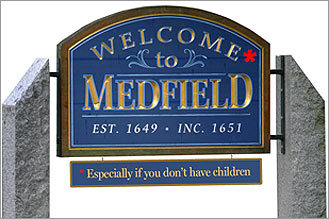Subsidizing families

Boston Globe image.
A lot of activists accuse DC (and other cities) of not having family-friendly policies, of seeking households without children. And these same activists call for billions of dollars to be spent on school modernization, social services, etc.
But the money needs to come from somewhere.
DC is unusual in that it retains all its sales taxes in addition to property taxes. Plus, unlike most cities, it collects income tax. So it makes a lot more money than a typical city. It's why DC's residential property taxes are relatively low compared to surrounding jurisdictions. (The reason property taxes are high is because the properties are highly valued/worth more, not because of a higher tax rate.)
But families, or more accurately, educating children, are very expensive costs for cities to bear. Definitely the cost for one child often exceeds the typical property + income tax revenue from an average household.
This comes up in the article, "Welcome* to Medfield: *Especially if you don't have children," from the Boston Globe.
Labels: education, public finance



0 Comments:
Post a Comment
<< Home